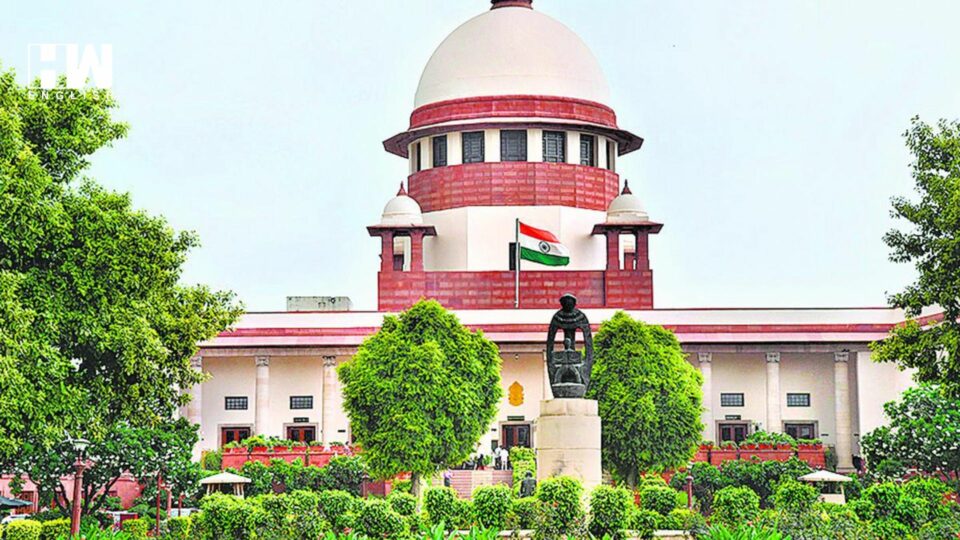The Supreme Court on Tuesday, May 22, dismissed petitions seeking a review of its December 11, 2023 verdict that upheld the abrogation of Article 370, which granted special status to Jammu and Kashmir. A five-judge bench, led by Chief Justice DY Chandrachud, considered the pleas in chambers and rejected requests for an open court hearing.
The bench, also comprising justices Sanjiv Khanna, B R Gavai, Surya Kant and A S Bopanna (since retired), in its 1 May ruling, said, “Having perused the review petitions, there is no error apparent on the face of the record. No case for review under Order XLVII (47) Rule 1 of the Supreme Court Rules 2013. The review petitions are, therefore, dismissed,” It also rejected permission to appear and argue in person, a request from various petitioners.
The petitions were filed by the Awami National Conference, Jammu and Kashmir People’s Democratic Party, CPI(M) leader Mohammed Yousuf Tarigami, Jammu and Kashmir High Court Bar Association, and lawyer Muzaffar Iqbal Khan. A five-judge bench, led by Chief Justice DY Chandrachud, reviewed the pleas in chambers and denied requests for an open court hearing.
According to South First reports on December 11, the court had upheld the Centre’s 2019 decision and mandated assembly elections in Jammu and Kashmir by September end of this year, alongside the restoration of statehood “at the earliest.” The bench, emphasizing that Article 370, incorporated in the Indian Constitution in 1949, was a temporary provision, affirmed the President of India’s authority to revoke the measure in the absence of the Constituent Assembly of the erstwhile state, whose term expired in 1957.
In a landmark decision following a 16-day hearing, the five-judge Constitution bench settled the long-standing debate over Article 370. The bench delivered three concurring judgments, affirming the abrogation of Article 370 that provided Jammu and Kashmir a unique status upon its accession to the Union of India in 1947. Justices (since retired) Sanjay Kishan Kaul and Sanjiv Khanna also issued separate but concurring opinions on the matter.
The court stated that the erstwhile state had no “element of sovereignty” after the Instrument of Accession and the 1949 proclamation adopting the Indian Constitution. It also held that Article 370 was a feature of “asymmetric federalism and not sovereignty”.
Chief Justice DY Chandrachud noted Solicitor General Tushar Mehta’s assurance that Jammu and Kashmir’s statehood would be restored, excluding Ladakh, which remains a Union Territory. While splitting the state into two UTs, the government provided for legislative assembly only for the UT of Jammu and Kashmir.
The CJI, in the verdict, had said, “In view of the statement, we do not find it necessary to determine whether the reorganization of the State of Jammu and Kashmir into two Union Territories of Ladakh and Jammu and Kashmir is permissible under Article 3.
“However, we uphold the validity of the decision to carve out the Union Territory of Ladakh in view of Article 3(a) read with Explanation 1, which permits forming a Union Territory by separation of a territory from any State,”
ALSO READ: SBI Again Refuses To Disclose Electoral Bond SOPs
The court examined the validity of the Constitution (Application to Jammu and Kashmir) Order (CO)-272, dated August 5, 2019. This order applied all provisions of the Indian Constitution to Jammu and Kashmir and modified the term ‘constituent assembly’ in Article 370(3) to ‘Legislative Assembly’.
The court ruled that the concurrence of the state government was not necessary for the President to exercise power under Article 370(1)(d) to apply constitutional provisions to Jammu and Kashmir. The issuance of CO-272 was not deemed mala fide, thereby validating its application to Jammu and Kashmir.
Additionally, the Supreme Court upheld the validity of CO-273, which abrogated Article 370, stating that the President’s declaration was a culmination of the integration process and a valid exercise of power. Chief Justice Chandrachud emphasized that the Constitution is a complete code for constitutional governance and that the President had the authority to declare Article 370(3) ceased to operate without the Constituent Assembly’s recommendation. The president’s continuous exercise of power under Article 370(1) indicated an ongoing process of constitutional integration.
The petitioners had argued that Article 370 could not be amended without the state’s Constituent Assembly’s concurrence, which ceased to exist in 1957. They claimed that the provision had attained permanence in its absence. However, the court rejected this argument, affirming Article 370’s temporary nature.
As per reports, Justice (retd) Sanjay Kishan Kaul, in his concurring opinion, stated that the purpose of Article 370 was to gradually bring Jammu and Kashmir on par with other Indian states. He also ordered the establishment of an “impartial truth-and-reconciliation commission” to investigate human rights violations by state and non-state actors since at least 1980.
As an independent media platform, we do not take advertisements from governments and corporate houses. It is you, our readers, who have supported us on our journey to do honest and unbiased journalism. Please contribute, so that we can continue to do the same in future.

